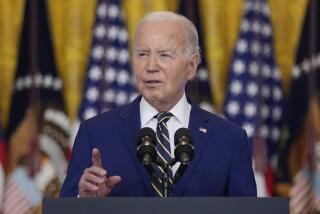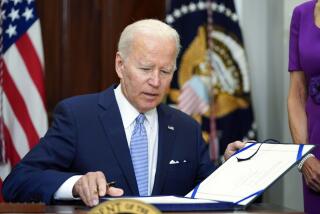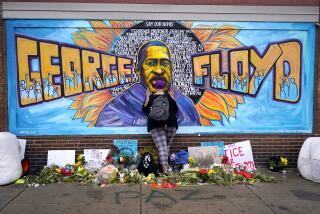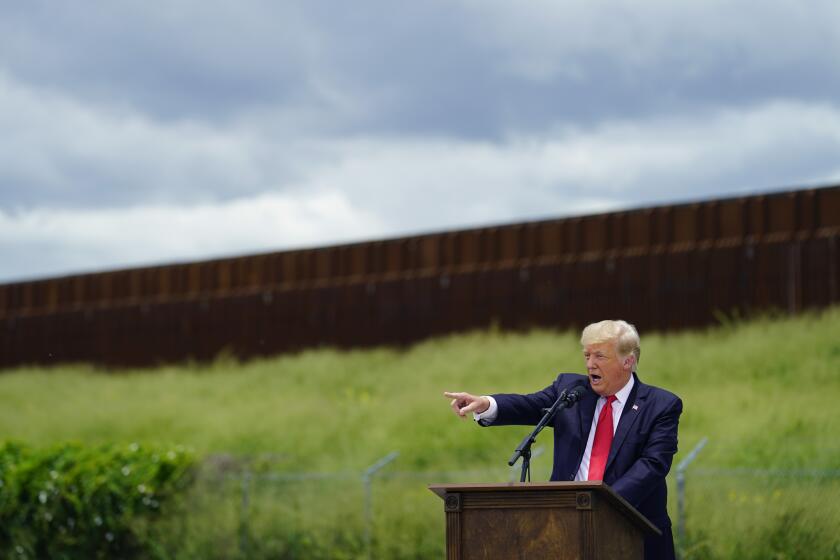‘Enough!’ Biden, decrying mass shootings and excessive force, signs executive order on policing
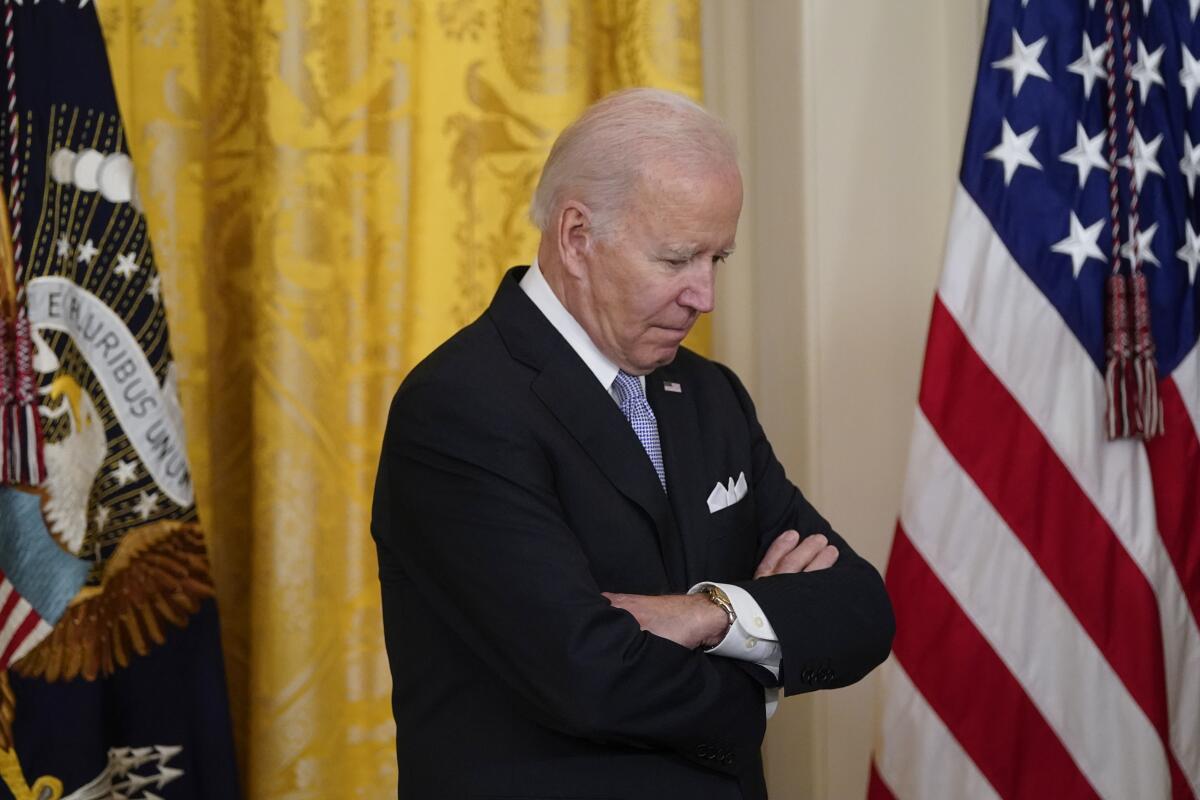
WASHINGTON — President Biden on Wednesday marked the second anniversary of George Floyd’s murder by a Minneapolis police officer by signing an executive order aimed at reforming policing at the federal level.
But the event was overshadowed by yet another act of violence — a shooting at a Texas elementary school on Tuesday that left at least 21 people dead — 19 children and two teachers.
“I’m sick and tired of it,” Biden said of the rampant gun violence, announcing he’ll travel to the Uvalde, Texas, campus in the coming days. “We must ask, when in God’s name will we do what needs to be done?”
Addressing an East Room audience that included relatives of those killed at the hands of police officers, Biden stated that the occasion was being held “for the same purpose — to come together and say ‘enough.’ ”
The order, which Biden acknowledged is no substitute for more far-reaching reforms that only Congress can enact, directs all federal agencies to revise their use-of-force policies, creates a national registry of officers fired for misconduct and provides grants to incentivize state and local police departments to strengthen restrictions on chokeholds and no-knock warrants.
“It’s a measure of what we can do together to heal the very soul of this nation, to address the profound fear and trauma and exhaustion that particularly Black Americans have experienced for generations,” Biden said, recalling the national wave of protests after Floyd’s murder. “The message is clear: Enough! Just enough!”
The order, signed by Biden as Floyd’s relatives, civil rights leaders, law enforcement officials and Democratic lawmakers looked on, also restricts the future transfer of most military equipment to law enforcement agencies.
The White House and the Justice Department have been at work on the order since a more sweeping police reform effort ran aground in the evenly divided Senate last year.
The attendance at Wednesday’s East Room ceremony of both civil rights and law enforcement leaders underscored Biden’s determination to adopt a centrist approach to an issue that sparks intense emotions on each side.
Propelled to the presidency two years ago by Black voters, many outraged by Floyd’s murder that summer, Biden has been cognizant of the political damage incurred by Democrats over calls to “defund the police,” which gave Republicans a potent line of attack.
Acknowledging that “progress can be slow and frustrating,” Biden rejected those who have sought to pit the cause of police reform against matters of public safety.
“We can show what’s possible when we work together,” he said.
Although Democrats need another big turnout from Black voters in November if the party hopes to hold on to its slim congressional majorities, Biden, who outlined a plan to “fund the police” in his State of the Union address in March, is clearly wary of alienating moderate voters by giving any appearance that he is anti-law enforcement.
In particular, the administration amended the use-of-force language in the order to reflect the concerns of law enforcement, softening a provision in an earlier draft that would have authorized federal officers to use deadly force only “as a last resort when there is no reasonable alternative, in other words only when necessary to prevent imminent and serious bodily injury or death.”
The final order instead refers to the Justice Department’s updated use-of-force policy, which was released this week. The first such revision of that policy in 18 years, the directive from Atty. Gen. Merrick Garland says officers may shoot suspects when they have “a reasonable belief that the subject of such force poses an imminent danger of death or serious physical injury to the officer or to another person.”
The policy also states that deadly force should not be used “against persons whose actions are a threat solely to themselves or property unless an individual poses an imminent danger of death or serious physical injury to the officer or others in close proximity.”
Vice President Kamala Harris, who spoke before Biden, began the event by remarking on the school shooting in Texas
— and by speaking to the relatives of those killed at the hands of law enforcement, touching on the universality of grief.
“You have endured an imaginable grief. You have experienced the anguish of losing someone you love and cherish,” Harris said. “You should not have to mourn, should never have had to mourn in order for our nation to feel your pain — and to understand what is wrong and to agree that something must be done.”
She also criticized Republicans for walking “away from their moral obligation” and not finding a compromise on police reform.
“This executive order is no substitute for legislation. Nor does it accomplish everything we know must be done,” Harris continued. “But it is a necessary and long overdue critical step forward.”
More to Read
Get the L.A. Times Politics newsletter
Deeply reported insights into legislation, politics and policy from Sacramento, Washington and beyond. In your inbox three times per week.
You may occasionally receive promotional content from the Los Angeles Times.
